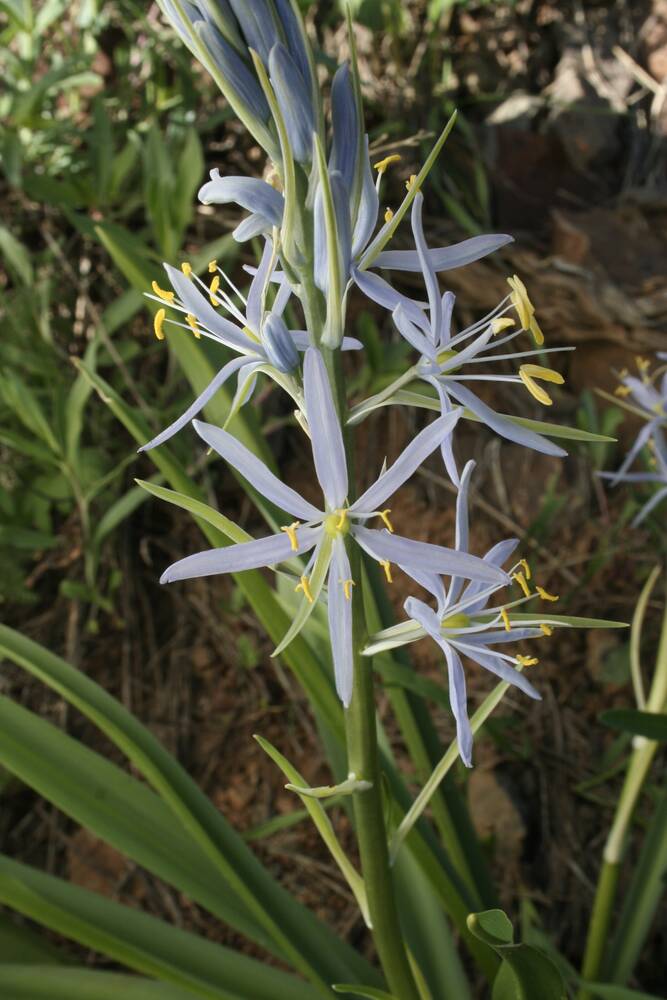
Plants diurnal; 50–90 cm tall; bulbs closely clustered to form evident “colony” of 2–20 or more basal shoots.
Leaves (7)10–20; broadly linear, 25–70 × (1)2–5 cm.
Inflorescences nodes 20–70, with 2–30 flowers open at a time; sterile bracts 0–7, most longer than pedicel, tan to blue.
Flowers corollas bilateral, radial or irregular, varying in symmetry on a single raceme; tepals 15–35 × 3–5 mm, pale blue to blue-violet, withering separately, persistent along with old flowers, veins 3(5).
Fruits erect, appressed to stem, oblong, 15–25 mm.
Seeds 5–10 per locule.
Open meadows, gentle to steep rocky slopes and basalt cliffs, full sun along wet seeps. Flowering May–Jun. 600–1800 m. BW. ID. Native.
Cusick’s camas is most readily distinguished from all other Camassia species in Oregon by its high basal leaf number (10 or more) and clonal habit.
as described under Camassia cusickii
Bulbs clustered, ellipsoid, 2-7 cm diam. Leaves rarely fewer than 10, 2.5-5 dm × 2-5 cm. Inflorescences 50-80 cm; sterile bracts 0, bracts subtending flowers exceeding pedicel. Flowers slightly zygomorphic; tepals withering separately after anthesis, pale blue or bluish violet, each 3(-5)-veined, 25-35 × 3-5 mm; anthers yellow, 3.5-4(-5) mm; fruiting pedicel incurving-erect or slightly spreading, 15-25 mm. Capsules not deciduous, light brown, ovoid or ellipsoid, 15-25 mm. Seeds 5-10 per locule. 2n = 30.Flowering mid--late spring. Hillsides; 1000--2000 m; Idaho, Oreg.